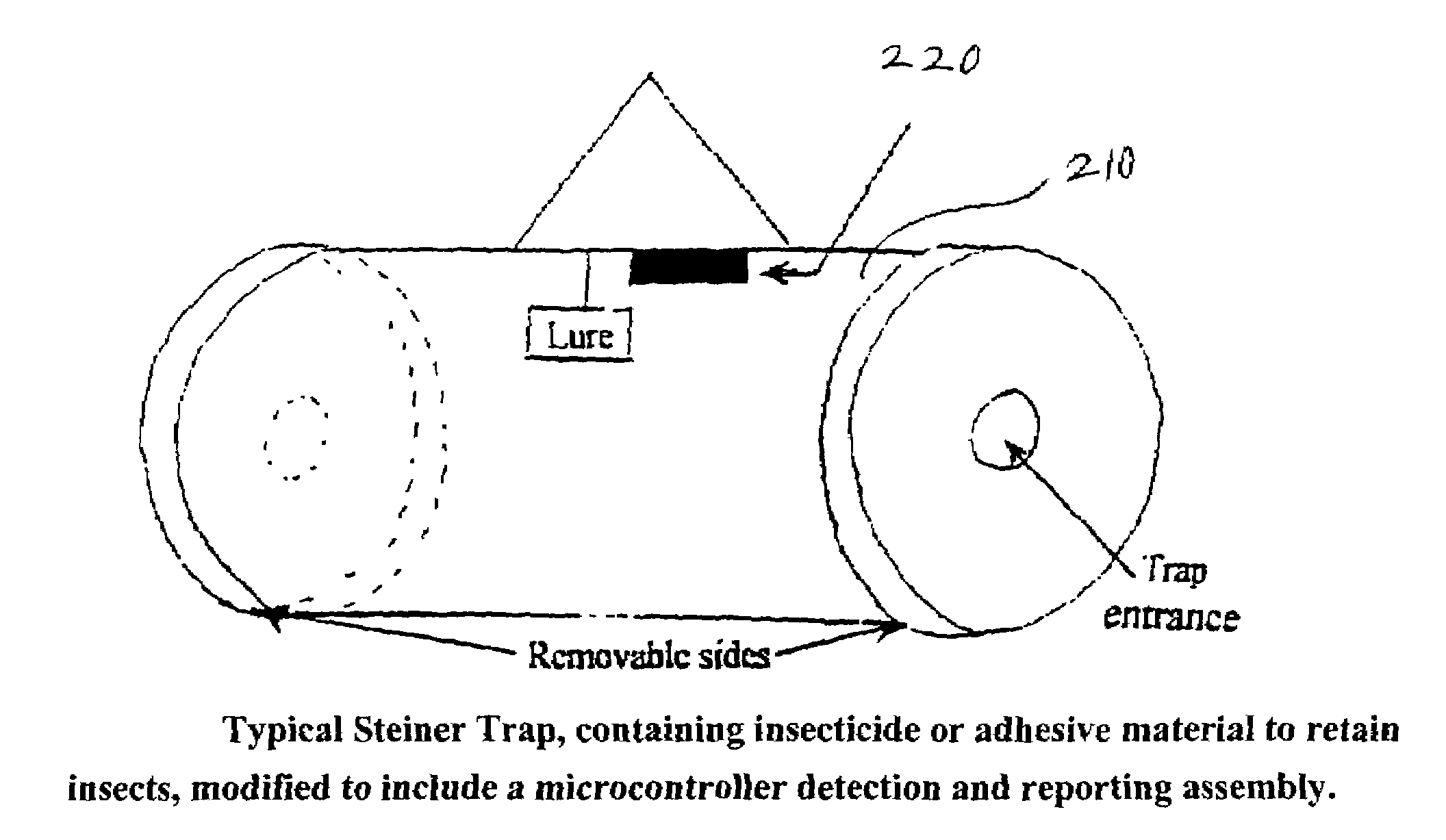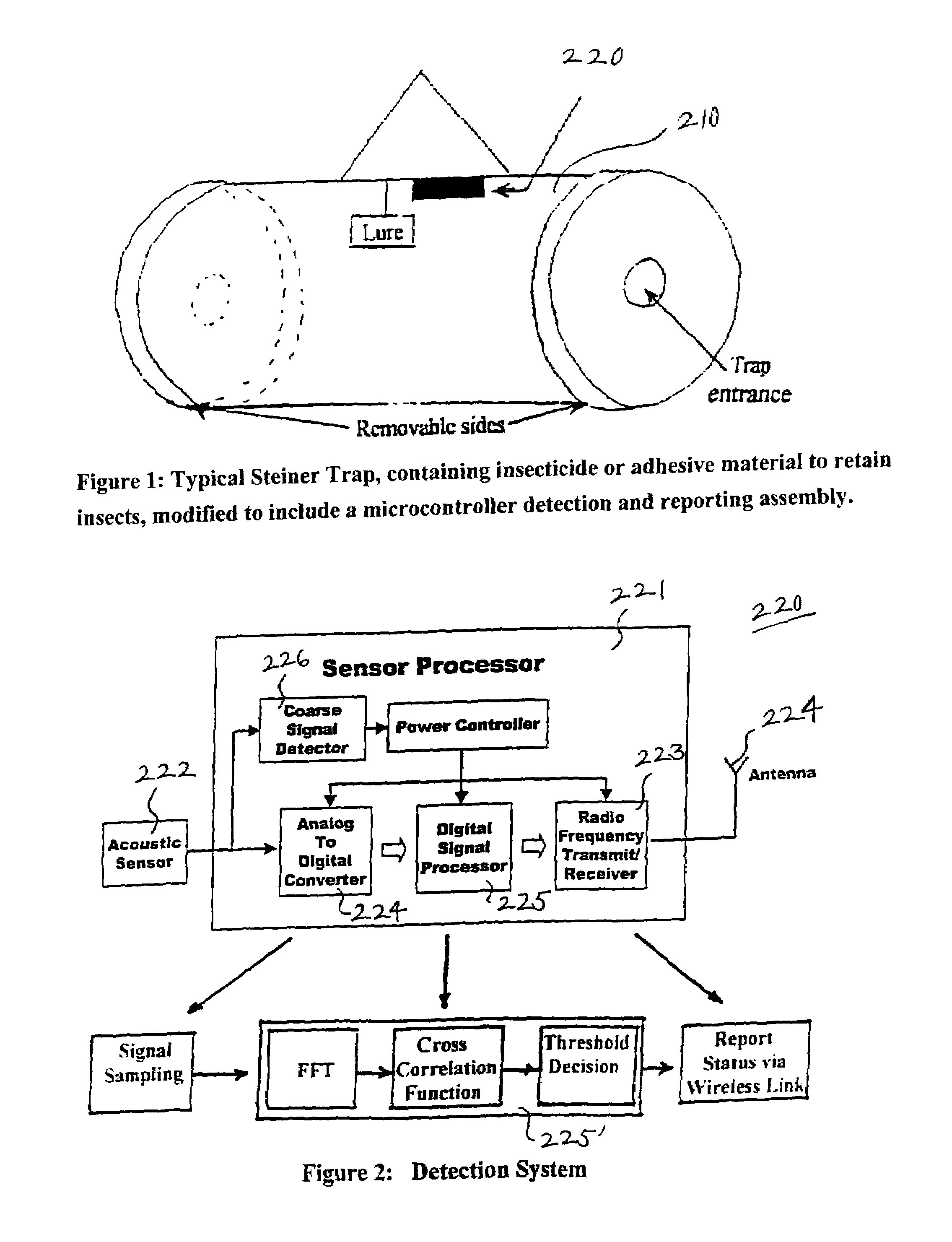Method and system for remotely detecting trapped insects
a technology for remotely detecting insects and trapping insects, applied in the field of methods and systems for remotely detecting trapping insects, can solve problems such as billions of dollars in lost profits
- Summary
- Abstract
- Description
- Claims
- Application Information
AI Technical Summary
Benefits of technology
Problems solved by technology
Method used
Image
Examples
Embodiment Construction
[0016]Referring first to FIG. 4, there is schematically illustrated a system 10 for remotely monitoring the presence of one or more species of targeted insects at a plurality of remotely distributed detection stations. The system generally includes a central monitoring station 100 and a plurality of remote detection stations 200 operably linked thereto via a suitable communications link 150. Depending on the requirements of the given application, the communications link 150 may be established and maintained either continually or on a non-continual, as-needed basis. Preferably, communications link 150 is a wireless link of any suitable type known and readily available in the art, over which bidirectional communication between central monitoring station 100 and each remote detecting station 200 may occur at appropriate times.
[0017]Central monitoring station 100 preferably includes suitable computer-based equipment for automated monitoring operation. Preferably, central monitoring stat...
PUM
 Login to View More
Login to View More Abstract
Description
Claims
Application Information
 Login to View More
Login to View More - R&D
- Intellectual Property
- Life Sciences
- Materials
- Tech Scout
- Unparalleled Data Quality
- Higher Quality Content
- 60% Fewer Hallucinations
Browse by: Latest US Patents, China's latest patents, Technical Efficacy Thesaurus, Application Domain, Technology Topic, Popular Technical Reports.
© 2025 PatSnap. All rights reserved.Legal|Privacy policy|Modern Slavery Act Transparency Statement|Sitemap|About US| Contact US: help@patsnap.com



